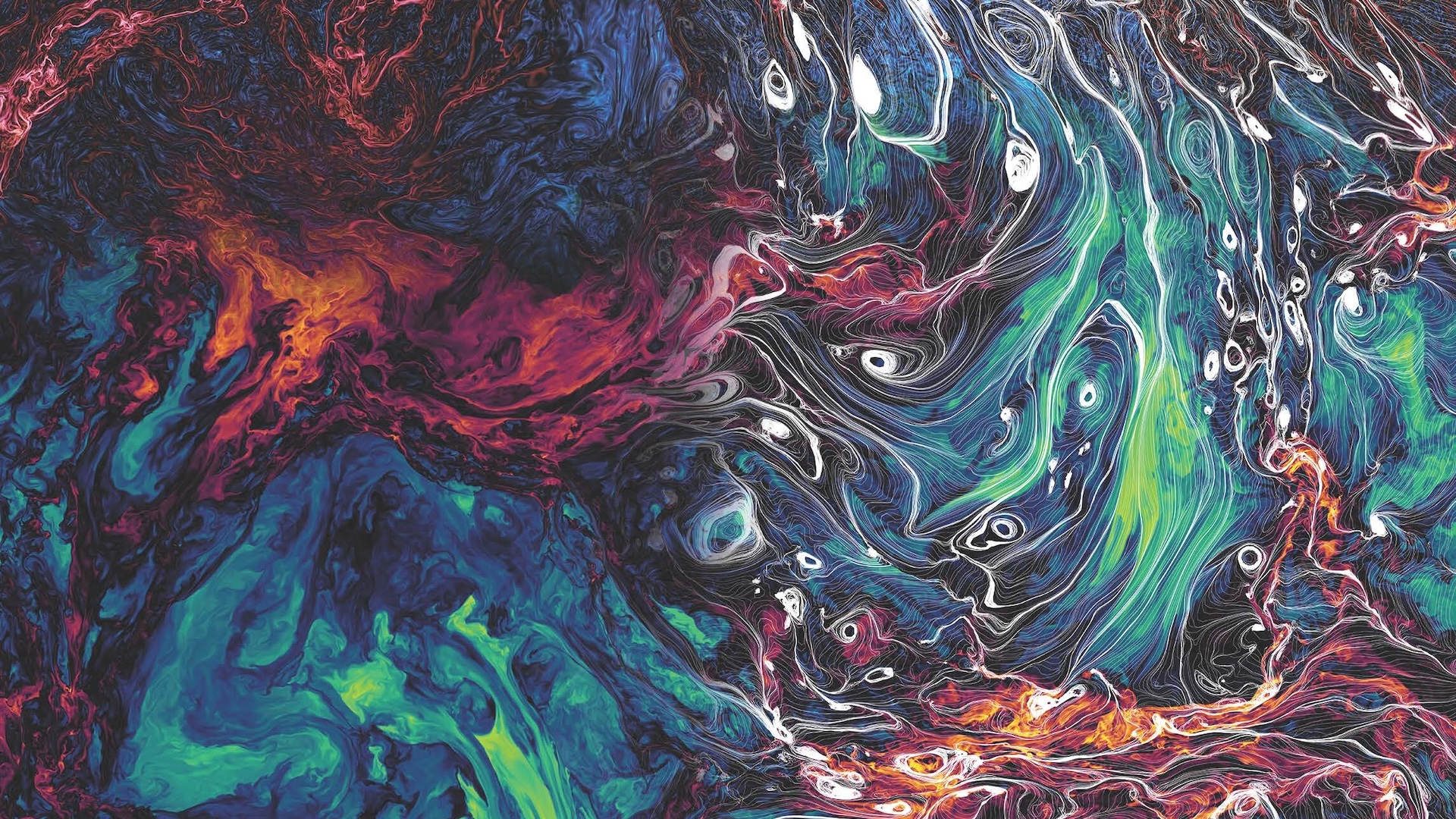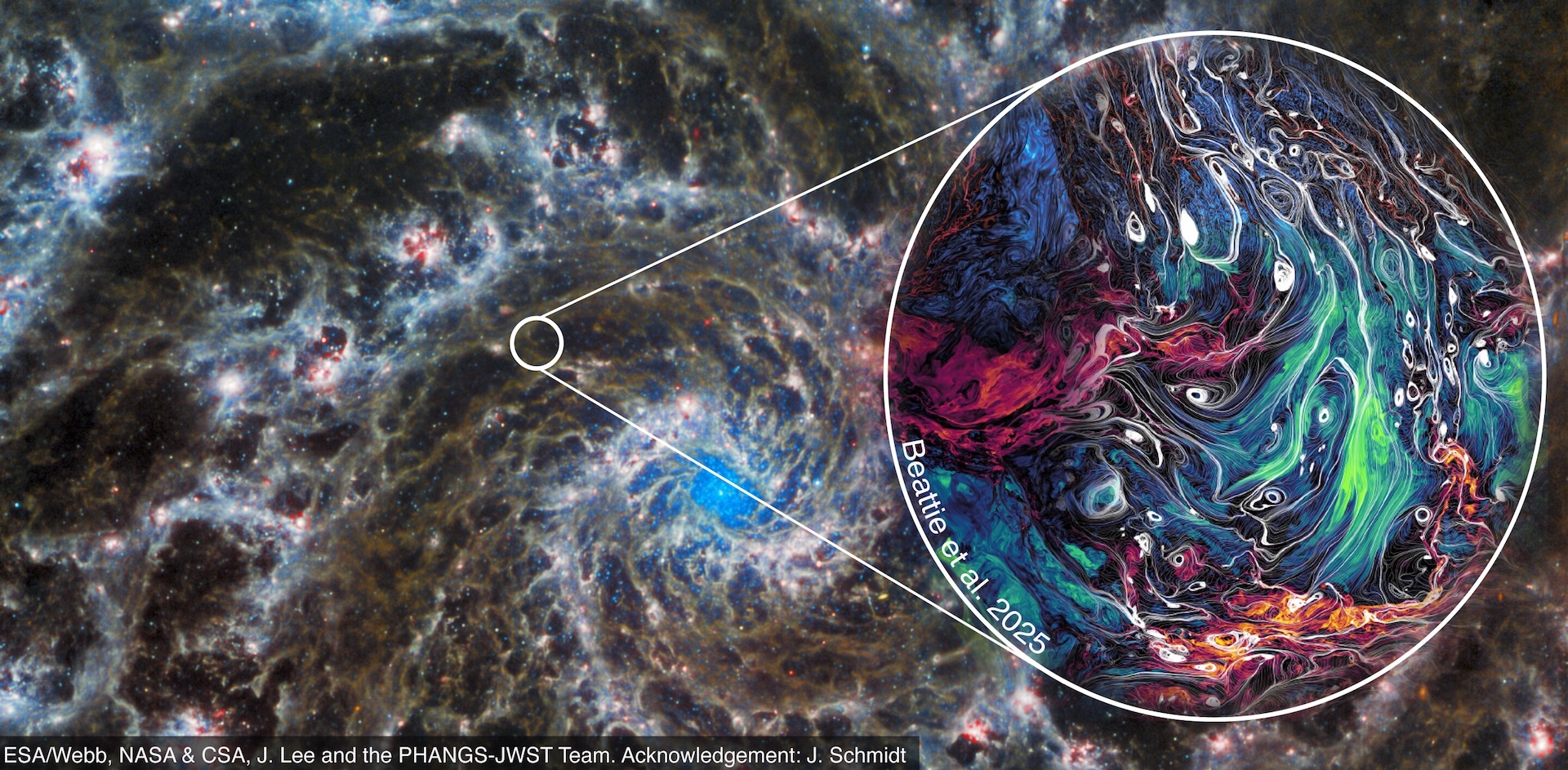Trippy supercomputer simulation offers unprecedented view of the space between stars
A groundbreaking new supercomputer model shows how magnetic fields shape the turbulent flow of charged particles in space.

If you've ever poured milk into a cup of coffee and watched it swirl, you've seen turbulence in action. This phenomenon is responsible for everything from a bumpy airplane trip to ocean currents. Now, researchers have developed a way to visualize in unprecedented detail the turbulence within the interstellar medium — the clouds of gas and charged particles between stars — and how it interacts with magnetic fields.
The model was described in a paper published May 13 in the journal Nature Astronomy. "This is the first time we can study these phenomena at this level of precision and at these different scales," James Beattie, an astrophysicist at the University of Toronto and Princeton University, and lead author of the new study, said in a statement.
Such complex calculations take a lot of computing power. To develop their model, Beattie and his colleagues used the SuperMUC-NG supercomputer at Germany's Leibniz Supercomputing Center. The model is scalable, consisting of a series of virtual modules that can be stacked to form a cube of up to 10,000 units. At this size, it can help researchers simulate our galaxy's magnetic field. When scaled down, it can be used to model more localized turbulent processes in space, such as the solar wind, the stream of charged particles emanating from the sun.
"This is the first time we can study these phenomena at this level of precision and at these different scales," Beattie said.
The charged particles in the interstellar medium are significantly more diffuse than even ultrahigh vacuum experiments on Earth. Still, their motion is enough to generate a magnetic field. This field is millions of times weaker than a fridge magnet, but in the vacuum of space, it plays a major role in shaping galaxies, and even in forming stars.

Unlike previous simulations, the new model considered this dynamic, replicating how the field shifts and swirls interstellar ions from areas of higher or lower density based on their charge. This could help astrophysicists gain a deeper understanding of how galaxies like our own came to be.
Get the world’s most fascinating discoveries delivered straight to your inbox.
In the future, Beattie and his team hope to develop models with even higher resolution. They also plan to compare their simulations against real-world data, such as solar wind measurements. Sensitive new observatories, like Australia and South Africa's joint Square Kilometre Array, promise to make these models even more precise.
The images promise to be just as stunning. "I love doing turbulence research," Beattie said. "It looks the same whether you're looking at the plasma between galaxies, within galaxies, within the solar system, in a cup of coffee or in Van Gogh's 'The Starry Night.'"

Joanna Thompson is a science journalist and runner based in New York. She holds a B.S. in Zoology and a B.A. in Creative Writing from North Carolina State University, as well as a Master's in Science Journalism from NYU's Science, Health and Environmental Reporting Program. Find more of her work in Scientific American, The Daily Beast, Atlas Obscura or Audubon Magazine.
You must confirm your public display name before commenting
Please logout and then login again, you will then be prompted to enter your display name.
